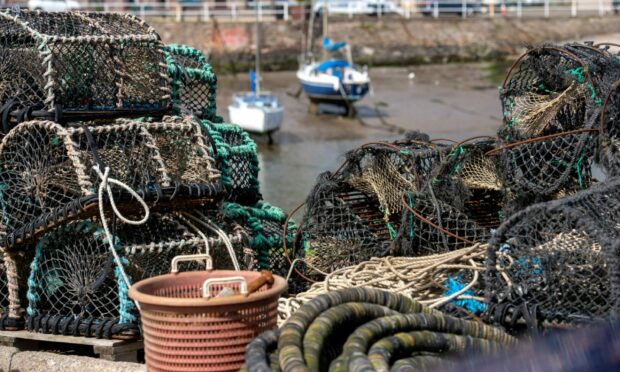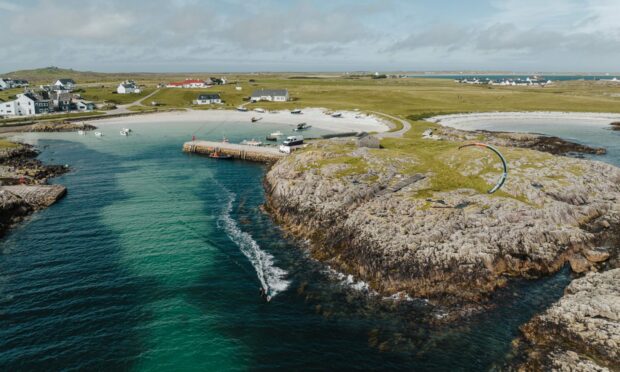Controversial SNP-Green proposals to restrict fishing in Scotland are being ripped up and started again, with the coalition branded a “disaster”.
Proposals to implement highly protected marine areas (HPMAs) across 10% of Scotland’s seas by 2026 will not go ahead, the Scottish Government announced today.
The plans to introduce the zones were met by a huge backlash from coastal and island communities, and anger from the fishing sector.
SNP Government minister Mairi McAllan revealed the latest policy U-turn at Holyrood.
She said the proposed timetable was a “particular concern” for supporters and objectors.
The Scottish Government will now “develop a new pathway and timetable” for the work to protect Scotland’s marine environment.
But ministers will face a tough task getting the fishing community back on side with one islander saying the government have “well and truly burnt their island boats”.
The original policy was a consequence of the power-sharing deal between the SNP and Greens, known as the Bute House Agreement.
‘We are still very worried’
Hector Stewart, director of Kallin Shellfish, a seafood processing company in North Uist, branded the co-operation agreement between the two parties a “disaster”.
He said: “It’s good news that they have been scrapped in the form they were in.
“We are still very worried of the government’s intentions. I think they have caused enough damage and uncertainty over the last few months.
“We are losing staff who have no confidence in the industry.
“The Bute House Agreement is just a disaster. We need to get back to some kind of economic reality.”
Rhoda Meek, chair of Tiree Community Trust, said the outcome was a “good result for coastal communities”, and she is “glad the government has listened”.
But the crofter and business owner added: “However, we should never have reached this point. The entire consultation process was flawed from the start.
“It has shown the top-down urban-centric government for what it is.
“Highlands and Islands MSPs who didn’t defy the government on this will struggle to regain the trust of their constituents and the SNP-Green coalition has well and truly burnt their island boats.”
Ms McAllan said the government remain “firmly committed” to enhancing marine protection, noting the EU’s target that by 2030, 10% of EU seas should be strictly protected.
She said: “I will outline more on our next steps after the summer recess, but I hope that it is clear that I am determined to protect our oceans in a way that is fair, and to find a way forward that ensures our seas remain a source of prosperity for the nation, especially in our remote, coastal and island communities.”
‘Relieved’ by U-turn
A recent public consultation sparked more than 4,400 responses, with a full response and next steps to be published after Holyrood’s summer recess.
Kate Forbes, MSP for Skye, Lochaber and Badenoch, said she was “relieved” by the Scottish Government’s decision to halt the scheme.
She called for the proposals to be scrapped during her campaign to become SNP leader.
Ms Forbes said: “That was born of genuine fear for the future of rural communities, as fishing is a lifeline for many.”
Elspeth Macdonald, chief executive of the Scottish Fishermen’s Federation, welcomed the decision to scrap the “flawed” scheme.
She said: “Ministers will now need to re-assure people that they are not simply intent on introducing the same policy by the back door.
“The seafood sector has set out a clear pathway on how we can work with government to strike the right balance between nature conservation and sustainable use, and the test for government now is to deliver upon that.”
Tavish Scott, chief executive of Salmon Scotland, said the decision is a “massive relief to salmon farmers and others who were concerned about the impact on their jobs”.
But North East Green MSP Maggie Chapman, described the move as “slowing down the process” to allow the government to “continue to work with the communities affected”.
She added: “However, the government remains committed to the policy and its aims, to prevent damage and exploitation of our seas.”
David Duguid, Conservative MP for Banff and Buchan, accused the SNP of “kicking the can down the road to 2030”.
What are Highly Protected Marine Areas?
The Scottish Government originally committed to introduce highly protected marine areas in at least 10% of Scotland’s seas by 2026.
The designated sites would be strictly protected to allow the marine ecosystems within to recover and thrive.
Limits would be placed on some human activities, such as fishing and aquaculture, while allowing some “non-damaging” activities to take place at “carefully managed levels”.




